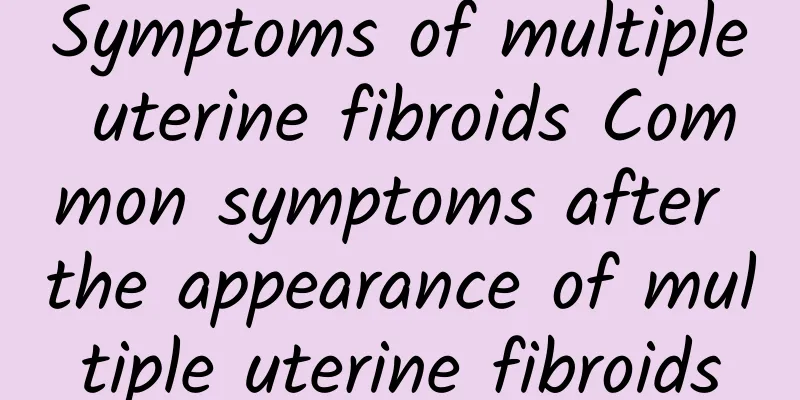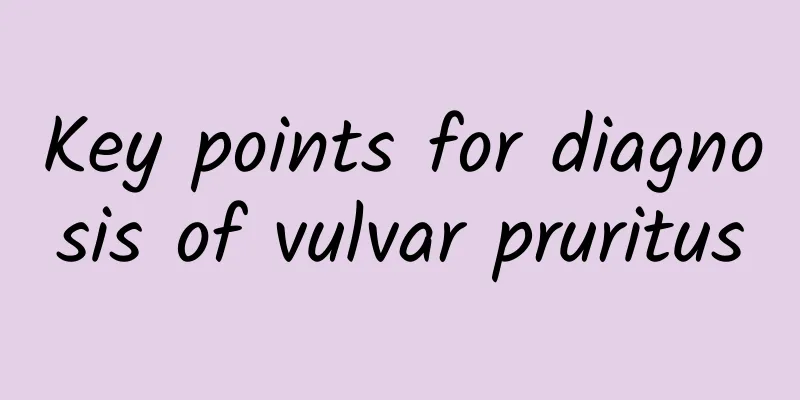Symptoms of multiple uterine fibroids Common symptoms after the appearance of multiple uterine fibroids

|
(1) Uterine bleeding is the main symptom of uterine fibroids, which occurs in more than half of patients. Among them, cyclical bleeding is more common, which can be manifested as increased menstruation, prolonged menstruation or shortened menstruation. It can also be manifested as irregular vaginal bleeding during menstruation. Uterine bleeding is common in submucosal fibroids and intramural fibroids, while subserosal fibroids rarely cause uterine bleeding. (2) Abdominal masses and compression symptoms Myomas grow gradually. When the uterus is enlarged for more than 3 months, when it is the size of a pregnant uterus or a large subserosal myoma located at the bottom of the uterus, the abdominal mass can usually be felt, and it is more obvious in the morning when the bladder is full. The mass is substantial, movable, and not tender. When myomas grow to a certain size, they can cause symptoms of compression of surrounding organs. Myomas on the anterior wall of the uterus close to the bladder can cause frequent urination and urgency; huge cervical myomas compressing the bladder can cause poor urination or even urinary retention; myomas on the posterior wall of the uterus, especially canyon or posterior lip of the cervix, can compress the rectum, causing poor defecation and discomfort after defecation; huge broad ligament myomas can compress the ureters and even cause hydronephrosis. (3) Pain Generally speaking, uterine fibroids do not cause pain, but many patients may complain of lower abdominal swelling and back pain. Acute abdominal pain occurs when the pedicle of a subserosal fibroid is twisted or when a uterine fibroid undergoes red degeneration. Endometriosis or adenomyosis is also common, and dysmenorrhea may occur. (4) Increased leucorrhea. The increase in the uterine cavity, the increase in endometrial glands, and pelvic congestion can increase leucorrhea. When the uterine or cervical submucosal fibroids ulcerate, become infected, or necrotic, bloody or purulent leucorrhea will occur. The above content is some basic information about multiple uterine fibroids. I hope that friends can learn more after reading it and get rid of this disease as soon as possible. |
>>: How to treat multiple uterine fibroids? How to use medicine for multiple uterine fibroids
Recommend
Why do so many women suffer from pelvic peritonitis?
Pelvic peritonitis is a common disease in women. ...
How long should I apply hot compress to pelvic effusion?
Pelvic effusion is a gynecological disease. If it...
Stress causes depression and overeating! Tap 8 parts to relieve stress and massage, help lose weight
Being in an environment of high mental stress, te...
How to check for habitual miscarriage? There are 5 items
Habitual abortion has many similarities with gene...
What should women pay attention to after uterine fibroid surgery?
Everyone knows that uterine fibroids are a very c...
Recommended effective treatment methods for early stage adnexitis
The early stage is the best time to treat adnexit...
Will eating too much oatmeal lead to weight gain?
Oats are a popular health food and are considered...
Traditional Chinese medicine teaches you how to fight off five types of pelvic inflammatory disease
When it comes to pelvic inflammatory disease, mos...
Summer light meal jade vegetable rolls are crispy and delicious and help detoxification
Cabbage and carrots are very low in calories. Cab...
What are the most common symptoms of pelvic inflammatory disease?
There are many diseases in the pelvic cavity, and...
Treatment of mycoplasma infection
Is mycoplasma infection in women serious? Mycopla...
Seven clinical manifestations of uterine fibroids
Although uterine fibroids are a common benign tum...
Patients with irregular menstruation can often eat angelica ginger mutton soup
Mutton can not only protect against wind and cold...
Treatment of rheumatic arthralgia after abortion
Artificial abortion is very harmful to women. Som...
What are the symptoms of pelvic peritonitis in women?
In recent years, more and more women have been ha...









